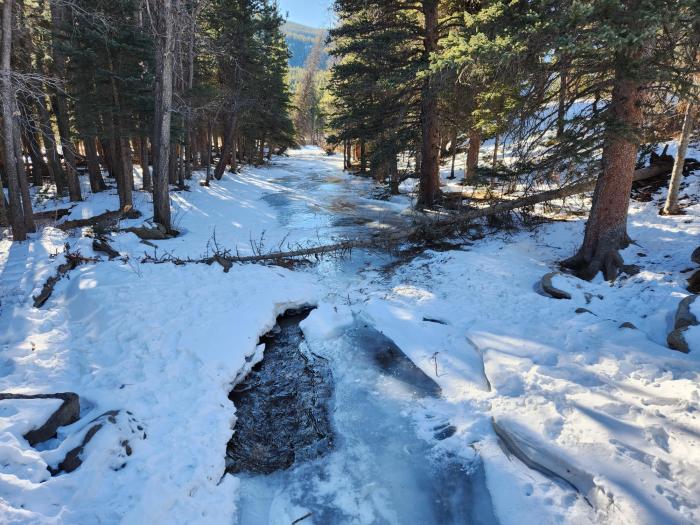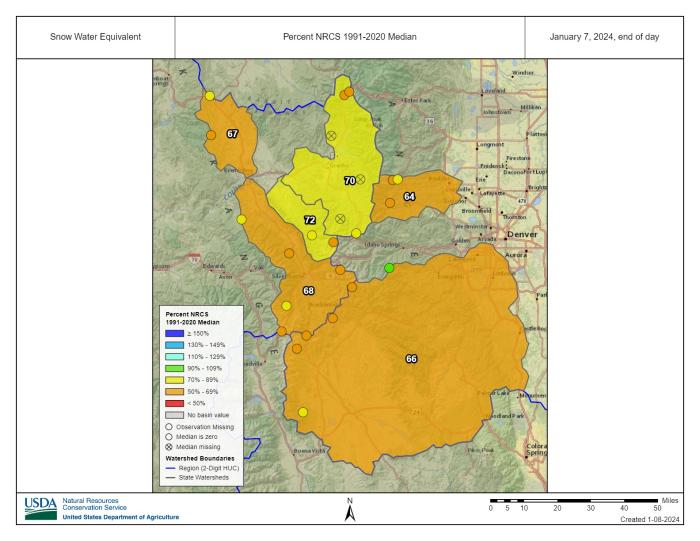New Year's wishes: A bit more snow, please!
Most of us have a slate of hope for the New Year. Denver Water does too!
We’re hoping for a bump in the snowpack as winter unfolds.
We entered January with ho-hum conditions, with snowpack in the mid-60s in terms of percentage of normal in Denver Water’s two water supply river basins — the South Platte and the Colorado.
That is not a banner start to the 2024 snowpack.
The last time the Colorado River snowpack started off near the current level was in 2013. For the South Platte however, snowpack is close to where it was last year.
“I’d rather be ahead than behind, but there’s still plenty of time for improvement,” noted Nathan Elder, Denver Water’s manager of supply. “The deficits we see currently can still be made up with one big storm.”
Another way to look at the snowpack so far this season is by plotting current snow water equivalent percentages against the normal trajectory through the winter and spring. This graphic looks at Colorado's snow water equivalent percentages in early January 2024 compared to normal.
There’s another point that can be made to push back on any early pessimism: Reservoir storage levels are the best since 2019 for Denver Water, at 86% of average versus the 83% that is typical this time of year. Statewide, too, reservoirs are in good shape following a good snow (and rain!) year in 2023.
Last year’s boost in reservoir levels is critical, as the extra water could help nurse water providers through a tough year should conditions remain underwhelming during the next four months of 2024.
Notably, reservoir conditions on the Eastern Plains are strong, too, boosted by a snowstorm that hit northeast Colorado the day after Christmas. Having high water storage levels for farmers and ranchers is always important because that reduces the potential that Denver Water might need to send more water downstream to meet the demands of older, more senior water rights holders.
"Below-normal snowpack is always concerning. Recent storms brought a little improvement and we continue to watch the weather and plan for this year's spring runoff — while hoping for more snow,” Elder said.
Now is a good time to check for water leaks inside your home, because indoor use in the wintertime matters. Every bit we save in these colder months is water available to us when the warm months arrive.”




